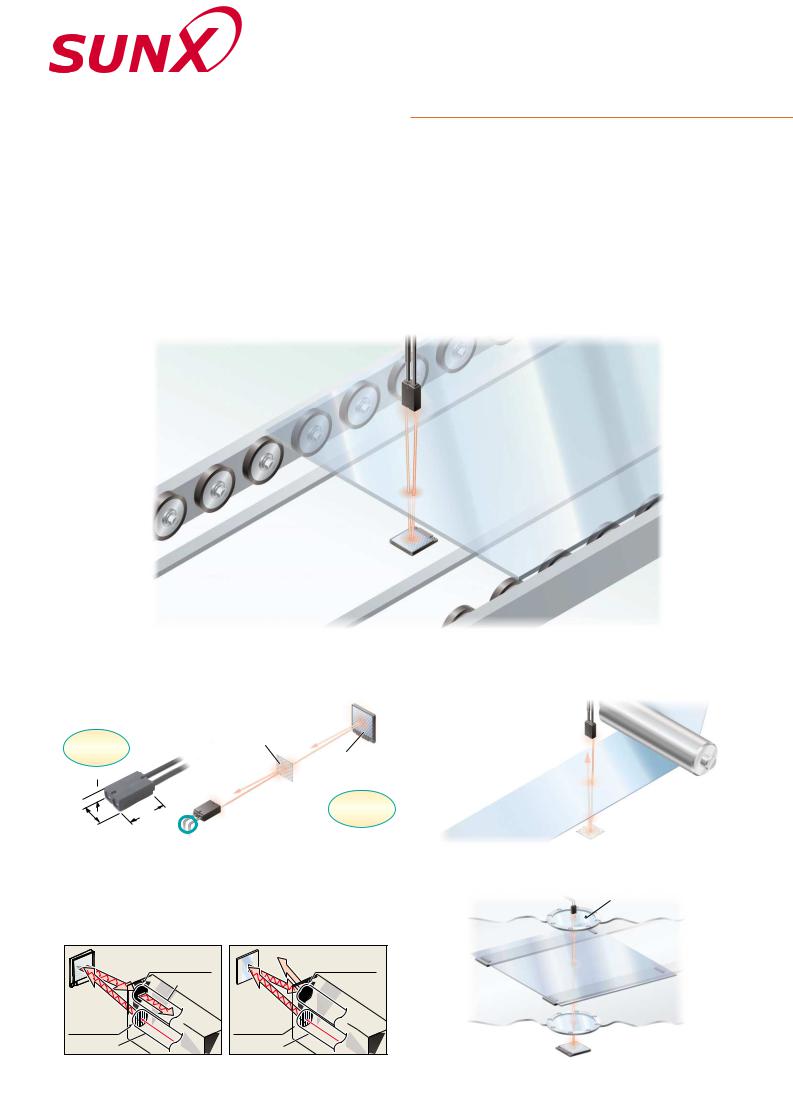Panasonic FR-WKZ11 Manual

RETROREFLECTIVE WITH POLARIZING FILTERS FIBER
 FR-WKZ11
FR-WKZ11
Stable sensing of transparent objects
Even glass substrates can be accurately detected.
Compact head and long sensing range |
Gives stable detection of transparent objects |
This fiber has a compact head of W9.5 H5.2 D15 mm W0.374 H0.205 D0.591 in. Equipped with sharp bending fibers (Allowable bending radius: R1 mm R0.039 in) making it space efficient. It is a retroreflective type with a polarizing filters that has a long sensing range of 3,200 mm 125.984 in.
Because it’s a retroreflective type, light passes through transparent objects twice, so differences in light amount can be easily picked up and glass substrate and transparent films can be detected with good stability.
Space-saving
5.2 mm
0.205 in
9.5 mm |
15 mm |
|
0.591 in |
||
0.374 in |
||
|
When using RF-13
Reflective tape (accesory)
Sensing range: 800 mm 31.496 in
When using RF-230 Reflector (optional)
Sensing range:
3,200 mm 125.984 in
Long sensing range
Longest in the industry
 Allowable bending radius: R1 mm R0.039 in
Allowable bending radius: R1 mm R0.039 in
mSensing range values determined with the amplifier in LONG mode. Unstable detection may result
if setting the fiber to detect objects passing within 0 to 100 mm 0 to 3.937 in from the fiber head.
Because stable sensing is made possible at a long range, transparent
Unaffected by surface reflection from transparent objects
FR-WKZ11 has a built-in polarizing filters in its tip, so that it is unaffected by surface reflection from transparent objects and specular objects directly in front of it.
Reflector |
Polarizing filter B |
Beam- |
receiving fiber |
Polarizing filter A |
Beam-emitting fiber |
Light passing through polarizing filter A is changed the direction of polarization by a reflector and polarizing filter B only lets in beam whose wavelengths run horizontally.
Transparent object (glass substrate etc.)
Polarizing filter B
Beam-  receiving fiber
receiving fiber
Polarizing filter A


Beam-emitting fiber
Because the reflected light from the transparent object returns oscillating in the same direction as the incident light, it does not pass through polarizing filter B.
objects (glass substrates and the like) can be detected through a view port.
The surface reflection light of the view port facing the fiber is not received.
